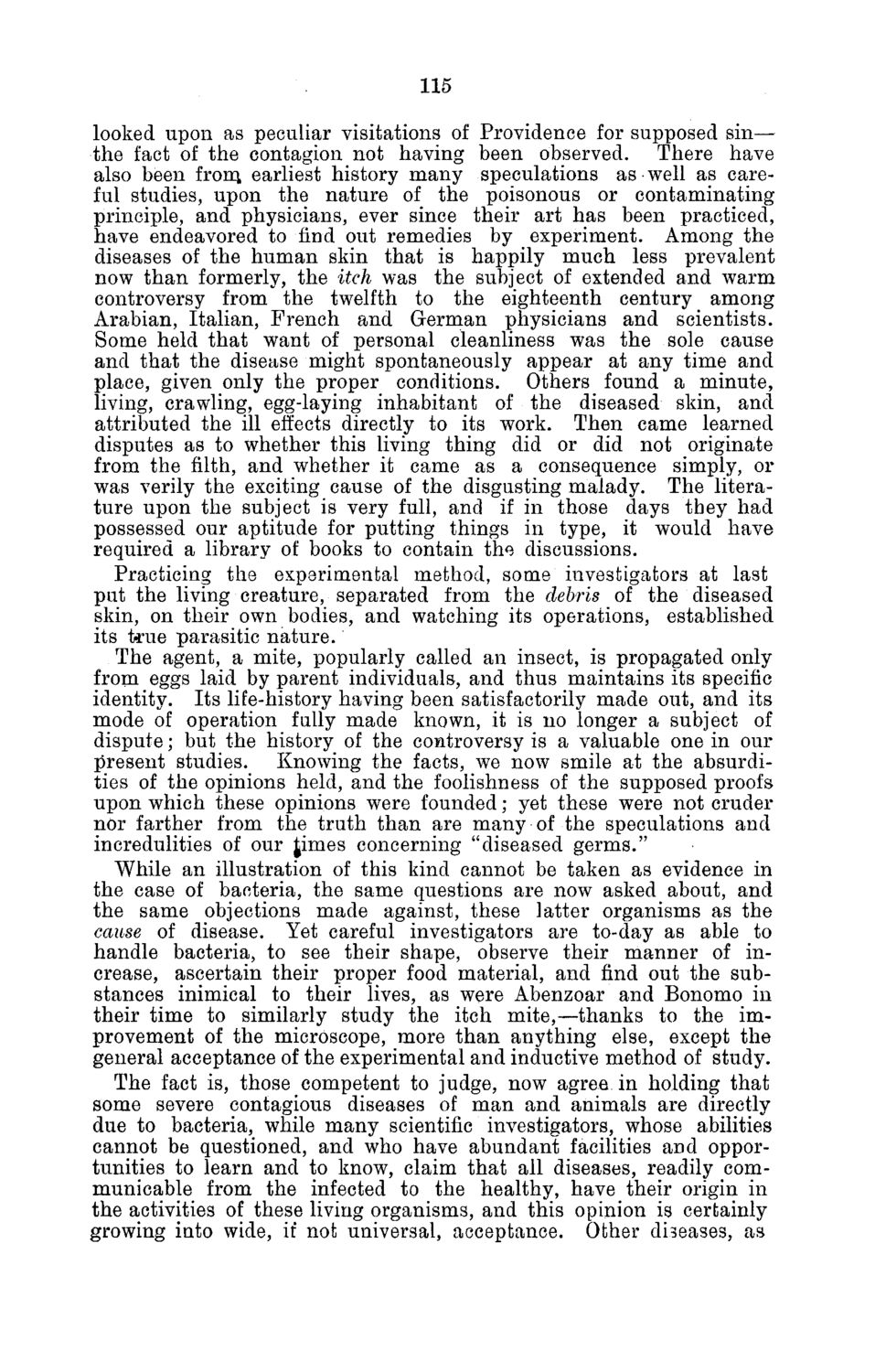| |
| |
Caption: Board of Trustees Minutes - 1882
This is a reduced-resolution page image for fast online browsing.

EXTRACTED TEXT FROM PAGE:
115 looked upon as peculiar visitations of Providence for supposed sin— the fact of the contagion not having been observed. There have also been from, earliest history many speculations as well as careful studies, upon the nature of the poisonous or contaminating principle, and physicians, ever since their art has been practiced, have endeavored to find out remedies by experiment. Among the diseases of the human skin that is happily much less prevalent now than formerly, the itch was the subject of extended and warm controversy from the twelfth to the eighteenth century among Arabian, Italian, French and German physicians and scientists. Some held that want of personal cleanliness was the sole cause and that the disease might spontaneously appear at any time and place, given only the proper conditions. Others found a minute, living, crawling, egg-laying inhabitant of the diseased skin, and attributed the ill effects directly to its work. Then came learned disputes as to whether this living thing did or did not originate from the filth, and whether it came as a consequence simply, or was verily the exciting cause of the disgusting malady. The literature upon the subject is very full, and if in those days they had possessed our aptitude for putting things in type, it would have required a library of books to contain the discussions. Practicing the experimental method, some investigators at last put the living creature, separated from the debris of the diseased skin, on their own bodies, and watching its operations, established its true parasitic nature. The agent, a mite, popularly called an insect, is propagated only from eggs laid by parent individuals, and thus maintains its specific identity. Its life-history having been satisfactorily made out, and its mode of operation fully made known, it is no longer a subject of dispute; but the history of the controversy is a valuable one in our present studies. Knowing the facts, we now smile at the absurdities of the opinions held, and the foolishness of the supposed proofs upon which these opinions were founded; yet these were not cruder nor farther from the truth than are many of the speculations and incredulities of our Jimes concerning "diseased germs." While an illustration of this kind cannot be taken as evidence in the case of bacteria, the same questions are now asked about, and the same objections made against, these latter organisms as the cause of disease. Yet careful investigators are to-day as able to handle bacteria, to see their shape, observe their manner of increase, ascertain their proper food material, and find out the substances inimical to their lives, as were Abenzoar and Bonomo in their time to similarly study the itch mite,—thanks to the improvement of the microscope, more than anything else, except the general acceptance of the experimental and inductive method of study. The fact is, those competent to judge, now agree in holding that some severe contagious diseases of man and animals are directly due to bacteria, while many scientific investigators, whose abilities cannot be questioned, and who have abundant facilities and opportunities to learn and to know, claim that all diseases, readily communicable from the infected to the healthy, have their origin in the activities of these living organisms, and this opinion is certainly growing into wide, if not universal, acceptance. Other diseases, as
| |